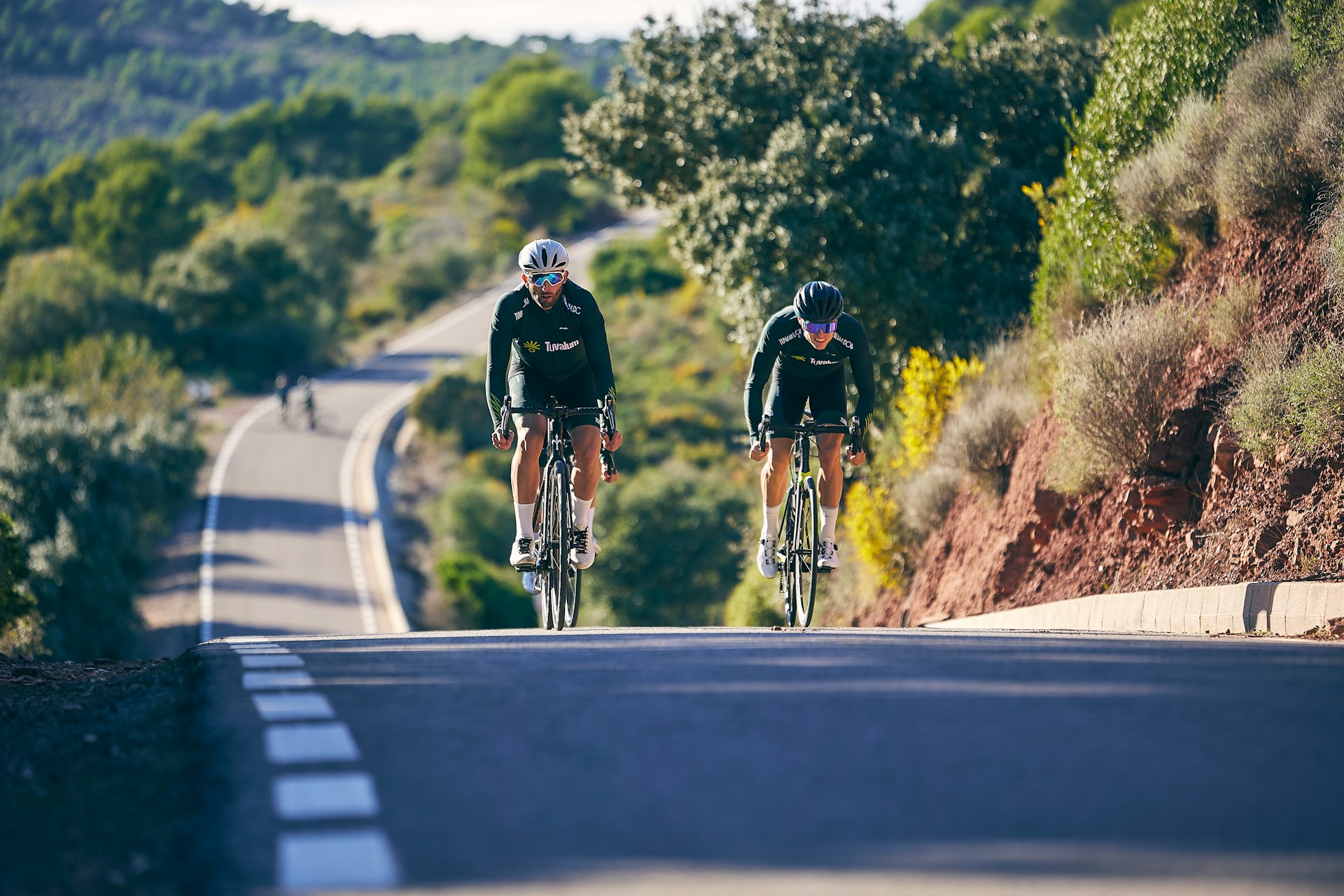Imagine reaching 5,000 meters above sea level, only to realize your gloves aren’t warm enough or you forgot a power bank for your camera. The Everest Base Camp trek is a life-changing adventure, but it also tests your endurance in one of the most remote and demanding environments on Earth. That’s why having the right packing list isn’t just helpful—it’s essential.
Many trekkers underestimate how quickly conditions change in the Himalayas. From icy mornings in Gorakshep to sunny afternoons in Namche Bazaar, your gear needs to be as adaptable as you are. Yet with so many items to consider, from technical clothing to toiletries and documents, it’s easy to overpack, underprepare, or simply forget something vital.
This post is your go-to guide for the Everest Base Camp trek packing list—highlighting the essentials you truly can’t afford to miss. Whether you’re a first-time trekker or a seasoned hiker, this list is designed to make your journey safer, lighter, and infinitely more enjoyable.
Why a Smart Packing List Matters for the Everest Base Camp Trek
Trekking to Everest Base Camp is not your average hike. You’ll face rapidly changing weather, altitude extremes, and long days on the trail. A well-planned packing list helps you stay warm, dry, safe, and comfortable every step of the way.
Avoid Common Trekker Mistakes
Many trekkers overpack or bring the wrong gear. Others forget essentials that are hard to find—or expensive—in the mountains.
Here’s what happens when you pack poorly:
- Too much weight slows you down and exhausts your porter.
- Forgetting key layers can lead to cold, miserable nights.
- Skipping altitude medication or first aid can cut your trek short.
- Missing gear like water purification or headlamps? You risk safety and hygiene.
Adapting to Everest’s Extreme Conditions
At lower altitudes like Lukla or Phakding, days may feel warm and pleasant. But higher up—think Dingboche or Gorakshep—it gets windy, snowy, and sub-zero fast.
Packing smart means layering well and preparing for all seasons, even within the same day.
You’ll need:
- Base layers for sweat control
- Insulating layers for warmth
- A waterproof outer shell
- Gloves, hats, and buffs for wind and sun protection
Don’t forget: every gram counts. Your duffel bag has a weight limit (usually 10-12 kg if using porters or yaks). Prioritizing essentials over luxuries makes the trek smoother.
Your Gear Impacts Your Experience
A good Everest Base Camp trek packing list is more than a checklist. It’s a way to ensure your trip is enjoyable and safe.
It can:
- Prevent health risks like hypothermia, sunburn, or dehydration
- Save money by avoiding last-minute rentals or purchases in Namche Bazaar
- Increase comfort during teahouse stays and long trail days
Confidence Comes From Preparation
When you know you’ve packed right, you walk lighter—mentally and physically. You won’t stress about weather changes or sore feet. You’ll focus on the views, the culture, and the achievement.
That’s why building the right Everest Base Camp packing list is the first step toward a successful trek. And this guide will help you do exactly that.
If you're looking to make your return journey more comfortable and time-efficient, consider an Everest Base Camp trek with helicopter return option. It not only shortens your descent but also offers breathtaking aerial views of the Himalayas.
Essential Clothing for Everest Base Camp Trek
Packing the right clothing is key to staying warm, dry, and comfortable during the Everest Base Camp trek. Layering is the secret to handling everything from crisp mornings to mid-day sun and evening chills.
1. Base Layers (Inner Layers)
These sit closest to your skin and help wick away sweat. They keep you dry and prevent chills.
- 2–3 moisture-wicking tops (synthetic or merino wool)
- 1–2 thermal leggings for colder days
2. Insulating Layers (Mid Layers)
This layer traps heat and keeps your core warm in higher altitudes.
- Fleece or lightweight down jacket
- Insulated vest (optional but helpful)
3. Outer Layers (Shell Layers)
Protection from wind, snow, and rain is non-negotiable above 4,000 meters.
- Waterproof, windproof jacket (Gore-Tex recommended)
- Waterproof trekking pants
4. Trekking Pants and Shirts
Comfortable and breathable layers are essential for long trekking days.
- 2 pairs of quick-dry trekking pants
- 2–3 trekking shirts (long and short-sleeved)
5. Cold Weather Accessories
Extremities get cold fast. Don’t overlook these essentials.
- Warm gloves (inner + insulated outer gloves)
- Woolen hat/beanie
- Neck gaiter or buff (protects from dust and wind)
6. Underwear and Sleepwear
Staying clean and dry at night is just as important.
- 3–4 pairs of moisture-wicking underwear
- 1 comfortable thermal set for sleeping
Why This Matters
The Everest Base Camp trek includes diverse terrain and temperatures. With the right clothing system, you’ll stay protected without overpacking. Quality gear reduces your risk of illness and improves overall comfort.
By packing smart and layering right, you’ll be prepared for whatever the trail throws your way.
Footwear: Trekking Boots and Camp Shoes
Your feet carry you to Everest Base Camp, so footwear matters more than you might think. The right boots prevent blisters, injuries, and unnecessary fatigue. The wrong ones can ruin your trek.
Trekking Boots: Your #1 Gear Priority
Trekking boots should be well broken-in, waterproof, and high-ankle for proper support.
Look for:
- Sturdy soles with strong grip (ideal for rocky and icy terrain)
- Waterproof membrane (Gore-Tex or similar)
- Comfortable ankle support to avoid sprains
Before the trek, wear your boots on several hikes. Breaking them in early prevents painful blisters during the trek.
Bring:
- 1 pair of high-quality trekking boots (already broken in)
- 3–4 pairs of merino or wool-blend trekking socks
- 1–2 liner socks (help reduce friction)
Camp Shoes: Comfort at the End of the Day
After a long hike, your feet need a break. Camp shoes let them breathe and rest.
Ideal camp shoes:
- Lightweight sandals or slip-ons
- Easy to pack and quick-drying
- Useful for bathroom trips or lounging in teahouses
Avoid flip-flops in cold weather. Closed-toe camp shoes offer more protection.
Why Footwear Choices Matter
Poor footwear leads to fatigue, discomfort, and potential injuries. Proper trekking boots for Everest Base Camp improve grip and stability on steep, uneven trails.
Camp shoes improve hygiene and reduce foot strain. They’re not luxury—they’re practical.
Together, the right boots and shoes make your journey safer and more enjoyable. Invest in quality. Your feet will thank you.
Sleeping Gear: Staying Warm at High Altitude
Nighttime temperatures at Everest Base Camp can drop well below freezing, especially in spring and autumn. A warm sleeping setup is essential for safety and comfort.
1. Four-Season Sleeping Bag
This is non-negotiable. You need a sleeping bag rated to at least -10°C (14°F), ideally lower.
Look for:
- Down insulation (lightweight and warm)
- Mummy shape for heat retention
- A hood and draft collar for extra warmth
You can rent one in Kathmandu, but buying your own ensures consistent quality and hygiene.
2. Sleeping Bag Liner
A liner adds warmth and keeps your bag clean. It’s lightweight and worth packing.
Options include:
- Fleece liners (adds 5–10°C of warmth)
- Silk liners (light and compact)
Also helpful if you’re renting a sleeping bag.
3. Sleeping Mat (Optional)
Most teahouses provide a mattress, but it’s thin. A foam mat or inflatable pad adds comfort and insulation from the cold floor.
Consider if you’re a light sleeper or trekking off-season.
4. Pillow Case or Travel Pillow
Teahouse pillows vary in cleanliness. A compact pillow or even a pillowcase gives peace of mind.
Why Sleeping Gear Matters
Proper sleeping gear for Everest Base Camp helps your body recover at altitude. Cold, restless nights weaken your energy and morale.
You’ll sleep better, stay warmer, and avoid colds or worse. Don’t skimp on this part of your gear.
Pack smart. Sleep well. Wake ready for another day in the Himalayas.
Gear and Equipment: Trekking Essentials
Beyond clothing and footwear, certain gear is essential for daily comfort, safety, and convenience on the Everest Base Camp trek.
1. Daypack (Your Daily Companion)
You’ll carry this pack every day, so comfort and functionality matter.
Look for:
- 25–35L capacity
- Padded shoulder straps and hip belt
- Built-in rain cover
Your daypack should carry water, snacks, rain gear, sunscreen, and valuables.
2. Duffel Bag for Porters
Porters typically carry your main bag. Use a sturdy, weather-resistant duffel.
Choose:
- 70–90L capacity
- Soft-sided but durable fabric
- Lockable zippers
Label your bag and pack smart—porters may not walk beside you.
3. Trekking Poles
Trekking poles ease strain on your knees, especially downhill.
Benefits:
- Extra stability on rough trails
- Reduced impact on joints
- Adjustable length for different terrains
Lightweight, collapsible poles are best for travel.
4. Headlamp with Spare Batteries
Power cuts are common in remote villages. A reliable headlamp is a must for early starts or late arrivals.
Use it for:
- Night walks to restrooms
- Reading or packing in low light
Avoid relying on your phone flashlight—it drains your battery.
5. Water Bottles or Hydration Bladder
Staying hydrated is critical at high altitude. Carry at least 2 liters of water.
Options:
- Insulated bottles (prevent freezing)
- Hydration bladders with sip tubes
Use purification tablets or a UV purifier like SteriPEN to make water safe.
Why This Gear Matters
These Everest Base Camp trekking essentials support your health and pace. Without them, even a short section can feel exhausting or risky.
The right trekking gear helps you move efficiently, stay safe, and enjoy the journey. Don’t overlook these small but critical items.
Personal Care and Toiletries for Everest Base Camp
Hygiene can be challenging on the trail, but staying clean and healthy boosts your comfort and confidence. The right toiletries for Everest Base Camp help you feel refreshed despite the cold and limited facilities.
1. Quick-Dry Towel and Biodegradable Soap
Showers are rare and usually cost extra. You’ll want fast-drying, space-saving hygiene gear.
Bring:
- Microfiber or quick-dry towel (compact and lightweight)
- Biodegradable soap or body wipes for dry cleaning days
- Travel-size shampoo (optional if you plan to shower)
2. Oral and Facial Care
Basic routines go a long way in the dusty, dry mountain air.
Pack:
- Toothbrush and small tube of toothpaste
- Lip balm with SPF
- Facial wipes or toner for daily cleansing
3. Skin Protection
Sun, wind, and cold can take a toll on exposed skin.
Must-haves:
- Sunscreen (SPF 30+)
- Moisturizer for face and hands
- High-SPF lip balm (pack extra)
4. Toilet Essentials
Most teahouses have basic toilets, often squat-style. Some don’t offer toilet paper.
Don’t forget:
- Toilet paper or tissues (in Ziploc bags)
- Hand sanitizer (used often, especially before meals)
- Small bottle of hand soap (optional)
5. Menstrual and Personal Hygiene
Plan ahead if you menstruate during the trek. Supplies are hard to find once you’re on the trail.
Bring:
- Pads or tampons (carry used ones out in zip bags)
- Menstrual cup (eco-friendly and reusable)
- Wet wipes for cleaning
6. Basic First Aid and Health Supplies
Minor issues are common—blisters, sunburn, dry skin. A small personal first-aid kit is essential.
Include:
- Plasters, blister pads, and antiseptic cream
- Diamox (for altitude, if prescribed)
- Painkillers, throat lozenges, and rehydration salts
Why Personal Care Matters on the Trail
A solid Everest Base Camp toiletries list keeps you clean, healthy, and ready to tackle the trek. These simple items reduce discomfort and prevent illness at altitude.
You don’t need luxury, just the right basics. Plan smart, pack light, and take care of yourself daily.
Electronics and Accessories
Electricity is limited and often unreliable at altitude. Smart packing ensures your devices stay powered throughout the trek.
Power Bank and Charging Cables
Charging options are limited and often cost extra at teahouses. A high-capacity power bank is a must.
Tips for charging electronics on Everest Base Camp trek:
- Carry a 10,000–20,000mAh power bank (or two)
- Pack USB charging cables for all your devices
- Turn devices to airplane mode to conserve energy
Camera or Smartphone
You’ll want to capture stunning landscapes, monasteries, and mountain views.
Bring:
- Smartphone or compact camera
- 2–3 extra memory cards
- 2 spare batteries (cold drains power fast)
Travel Adapter (Nepal Plug Type)
Nepal uses Type C and D plugs, often with limited outlets.
Carry:
- Universal adapter with surge protection
- Lightweight extension cord (optional but handy)
- Multi-USB wall charger to charge several devices at once
Documents and Money: What You Shouldn’t Forget
You’ll need proper documents for permits, safety, and check posts. Keep everything dry and accessible.
Passport and Trekking Permits
Your passport must be valid and accessible throughout the trek.
Essential items:
- Passport and 2 passport-size photos
- TIMS card (Trekkers' Information Management System)
- Sagarmatha National Park entry permit
Travel Insurance
Make sure your travel insurance for Everest Base Camp trek covers emergencies, especially evacuation.
Important coverage:
- Helicopter rescue up to 6,000 meters
- Trip cancellation and medical emergencies
- Coverage for high-altitude trekking
Cash in Nepali Rupees
ATMs are available in Kathmandu and Lukla but not beyond.
Carry:
- Enough cash for daily expenses, snacks, showers, and Wi-Fi
- Small denominations for easier transactions
- Keep in a dry bag or zip pouch
Optional but Recommended Items
These aren’t mandatory but greatly improve comfort and morale on the trail.
Snacks and Electrolytes
- Energy bars, trail mix, and ORS packets
- Great for mid-day boosts and hydration
Books or Journal
- Perfect for rest days or evenings in the teahouse
- Lightweight paperback or compact notebook
Lightweight Thermos
- Keeps tea or soup hot for hours
- Great for cold mornings or lunch breaks
Gaiters or Crampons (for winter)
- Adds protection on snow-covered or icy sections
- Useful if trekking in early spring or late fall
What Not to Pack for the Everest Base Camp Trek
Overpacking is one of the biggest mistakes. Every item adds weight for you or your porter.
Avoid:
- Heavy jeans or cotton clothing (slow to dry)
- Bulky electronics (laptops, large cameras)
- Duplicate gear or more than one luxury item
Renting vs Buying Trekking Gear in Kathmandu
Kathmandu is a popular hub to rent gear for Everest Base Camp in Kathmandu. It’s convenient and budget-friendly.
Available for rent:
- Down jackets, sleeping bags, trekking poles
- Gaiters, duffel bags, daypacks
Rental tips:
- Inspect gear for quality and warmth
- Prices vary by brand and duration
- Budget $1–$2 per item per day on average
Renting helps reduce your baggage and saves money—just ensure quality and fit before the trek.
Conclusion: Ready to Pack and Trek?
Planning your Everest Base Camp trek packing list isn’t just about gear—it’s about being ready for the journey of a lifetime. From layering smartly to choosing the right boots and bringing essentials like a power bank and permits, every item has a purpose.
Keep your load light, your choices practical, and your mindset focused on the adventure ahead. Whether you buy gear or rent it in Kathmandu, preparation is the key to comfort and safety.
Got your own must-pack item or clever tip? Share it in the comments—we’d love to hear from fellow trekkers!
Now, download your checklist, review your bag, and start ticking items off. The mountains are calling, and you’ll be ready.














